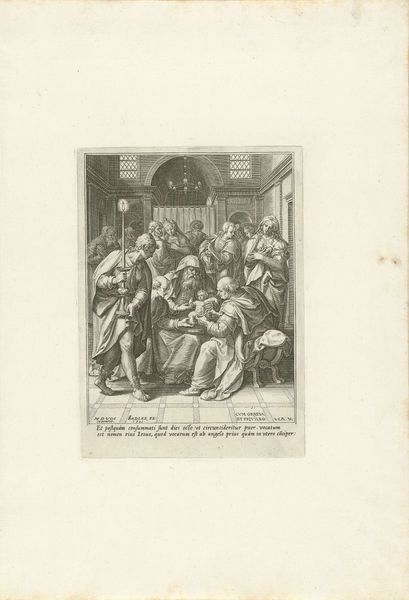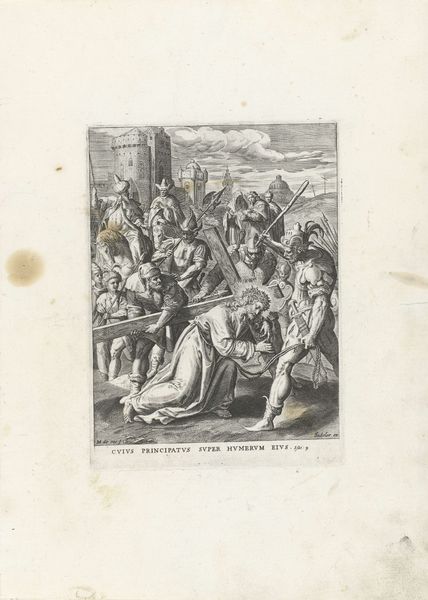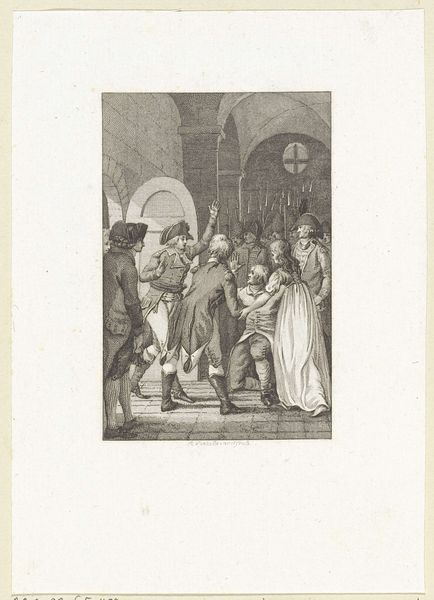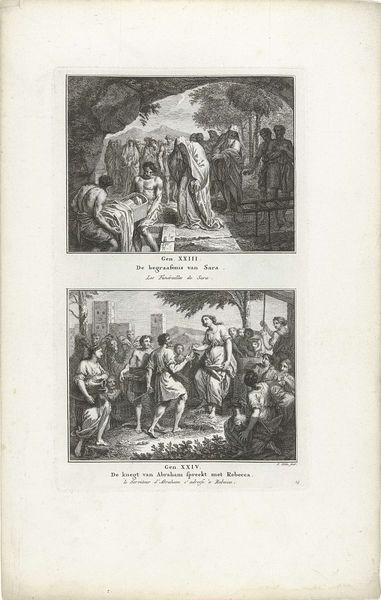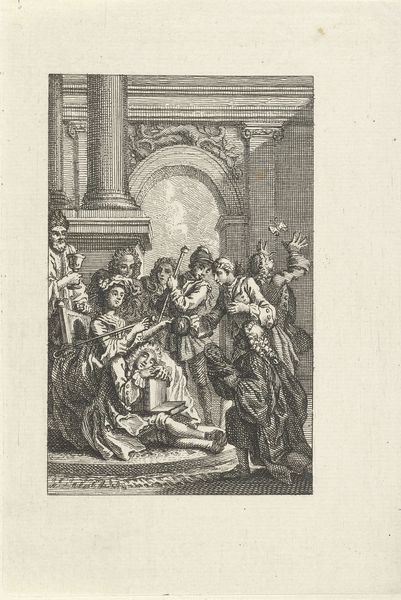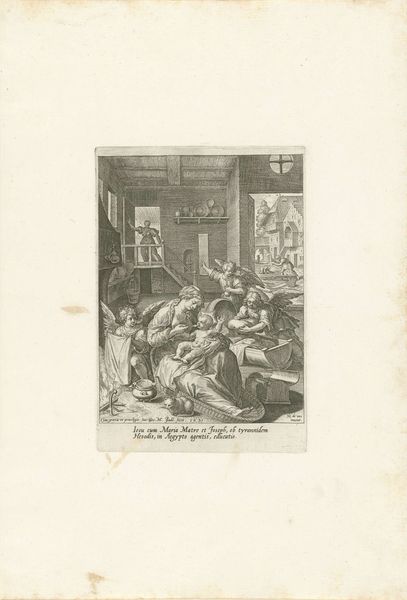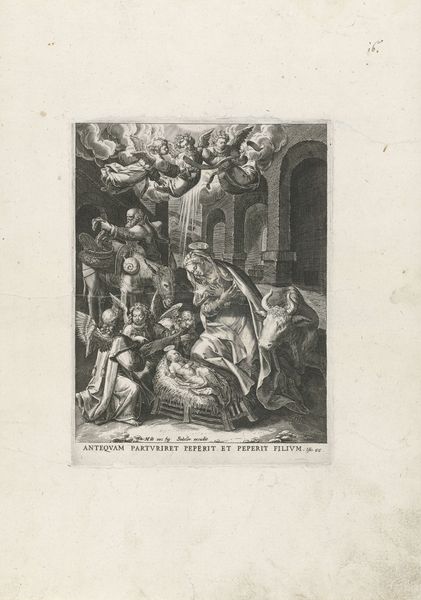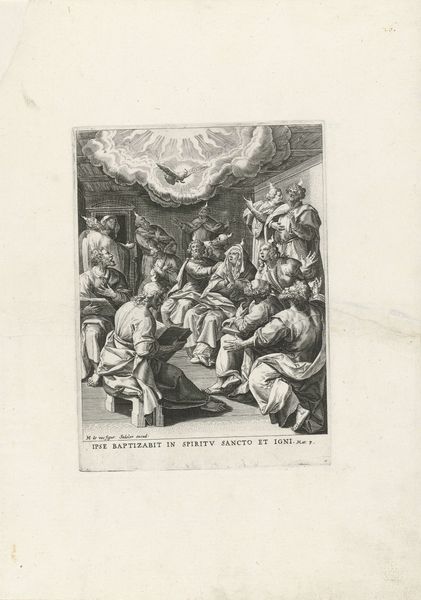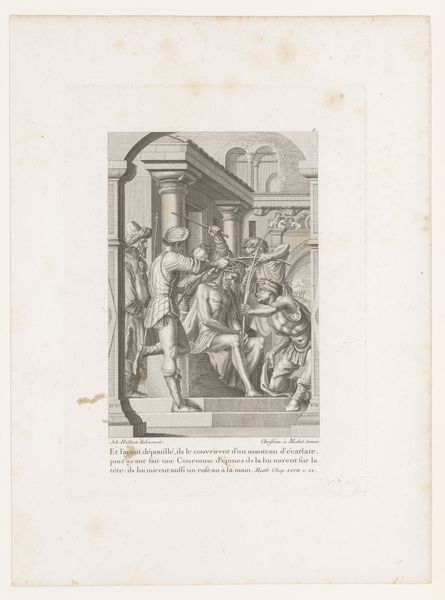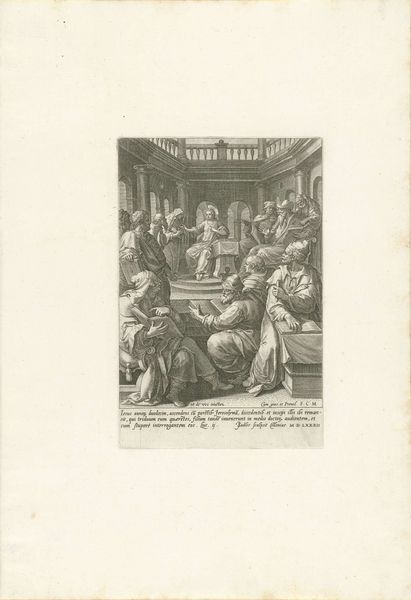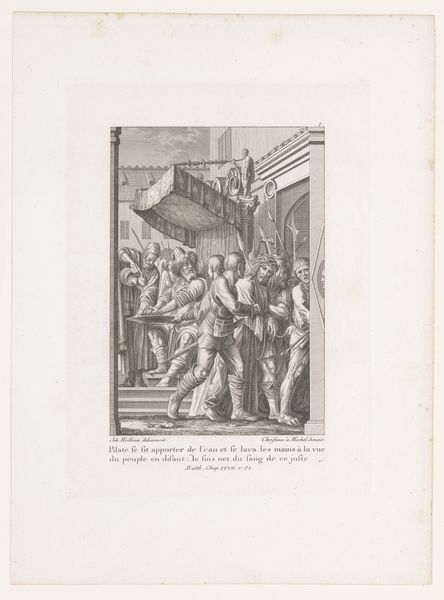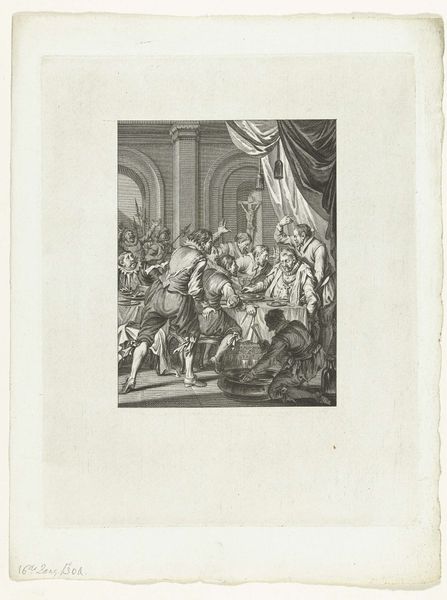
print, engraving
# print
#
old engraving style
#
figuration
#
history-painting
#
northern-renaissance
#
engraving
#
realism
Dimensions: height 201 mm, width 146 mm
Copyright: Rijks Museum: Open Domain
Curator: This is Johann Sadeler I’s “Adoration of the Magi,” an engraving dating to 1581 and residing here at the Rijksmuseum. Editor: The image, at first glance, feels staged almost. A regal group posing around the infant Jesus. But the density of figures hints at broader social meanings. Curator: Precisely. The subject, of course, is the biblical scene of the Three Wise Men presenting gifts to the newborn Christ. Sadeler, working in the Northern Renaissance tradition, aimed for realism. The work demonstrates the Catholic Counter-Reformation emphasis on spectacle. These kind of artworks reminded people of important rituals that solidify Catholic tradition. Editor: The gifts themselves are so important—gold, frankincense, and myrrh. Gold symbolizes kingship on earth, frankincense divinity, and myrrh mortality. They prefigure Christ’s life, death and role. Note how carefully they are delivered, almost reverently handled as a way to communicate respect. The expressions and body language of everyone is in agreement of his importance. Curator: Absolutely, and placing this event in what looks like an ancient Roman architectural backdrop certainly elevates the story. This was likely influenced by Sadeler’s exposure to classical imagery, an effect of humanism at the time. Editor: And the use of engraving heightens the contrast. It gives everything such a sharp definition, but there's an emotional distancing created by this style too, isn’t there? It’s precise and detailed, but somewhat cool to me, considering the subject. Curator: Perhaps, but that cool detachment allows the viewer to study and admire the symbolism, the craftsmanship and ultimately reinforce a devotion to tradition. Sadeler uses that technical skill to reaffirm theological tenets during a period of upheaval. Editor: A point well-taken. For me, looking at this again, the historical value lies in witnessing how symbols and styles were appropriated in religious contexts. Curator: And for me, it demonstrates the political and cultural power wielded by institutions that embraced these styles to reassert authority.
Comments
No comments
Be the first to comment and join the conversation on the ultimate creative platform.
